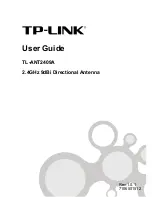
Description
2.5 Interface identifiers and addresses
SCALANCE W760/W720 to IEEE 802.11n Command Line Interface
Configuration Manual, 10/2015, C79000-G8976-C351-05
27
2.5.2
Address types, address ranges and address masks
Overview
Since the various types of addresses can be represented by different notations, the notations
used in the Command Line Interface are shown below:
●
IPv4 addresses
Addresses for the Internet Protocol version 4 are written in the decimal notation of four
numbers from the range 0 to 255, separated by a period.
Note
With leading zeros, the numbers are interpreted as octal numbers, e.g.: 192.168.070.071
→ 192.168.56.57.
●
Network masks
A network mask is a series of bits that describes the network part of an IP address.
The notation is normally decimal in keeping with the IP address.
●
Alternative notation for network masks
In contrast to the notation described above, network masks can also be represented as a
number of 1 bits. The mask of the decimal representation 255.255.0.0 is then written as
/16.
The syntax is then for example: <ipaddress> / 16
Note that there must be a space before and after the "/".
●
MAC addresses
In the syntax of the Command Line Interface, a MAC address is represented as a
sequence of 6 bytes in hexadecimal format, in each case separated by a colon.
The syntax is then, for example aa:aa:aa:aa:aa:aa
●
Multicast addresses
Layer 2 multicast addresses as used on this device use the notation of MAC addresses.
For permitted address ranges, check the rules or ask your network administrator.
















































